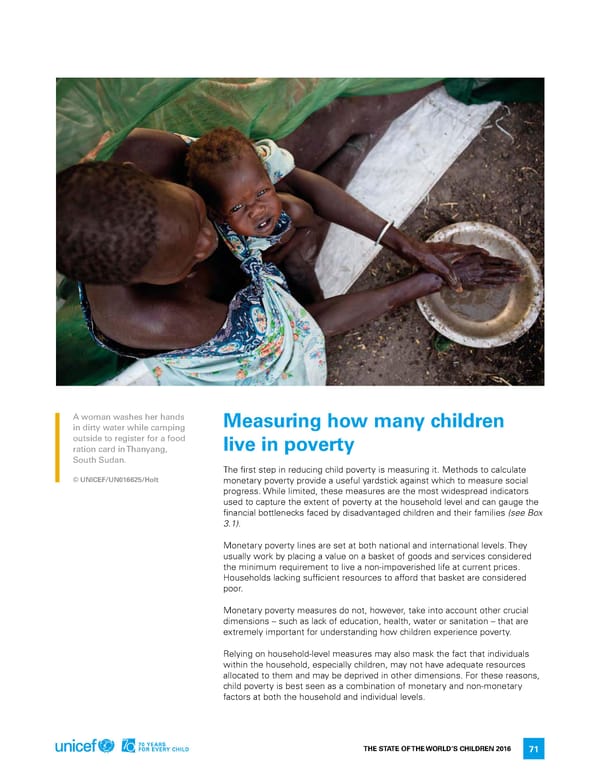A woman washes her hands Measuring how many children in dirty water while camping outside to register for a food live in poverty ration card in Thanyang, South Sudan. The first step in reducing child poverty is measuring it. Methods to calculate © UNICEF/UN016625/Holt monetary poverty provide a useful yardstick against which to measure social progress. While limited, these measures are the most widespread indicators used to capture the extent of poverty at the household level and can gauge the financial bottlenecks faced by disadvantaged children and their families (see Box 3.1). Monetary poverty lines are set at both national and international levels. They usually work by placing a value on a basket of goods and services considered the minimum requirement to live a non-impoverished life at current prices. households lacking sufficient resources to afford that basket are considered poor. Monetary poverty measures do not, however, take into account other crucial dimensions – such as lack of education, health, water or sanitation – that are extremely important for understanding how children experience poverty. relying on household-level measures may also mask the fact that individuals within the household, especially children, may not have adequate resources allocated to them and may be deprived in other dimensions. for these reasons, child poverty is best seen as a combination of monetary and non-monetary factors at both the household and individual levels. The STaTe of The World’S Children 2016 71
 70 Years for Every Child Page 87 Page 89
70 Years for Every Child Page 87 Page 89